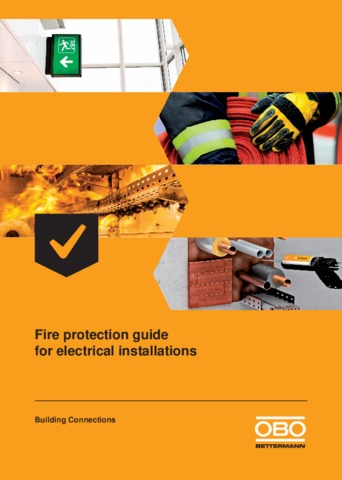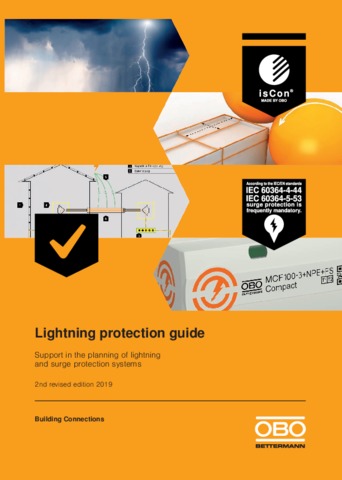If we take a look at the interior of a building, then it soon becomes clear that electrical installations weave their way through it: Starting in the cellar, through vertical shafts and corridors up to the rooms which are actually used.
The risks from lightning strikes, surges and the spread of fire to the electrical building installation are frequently underestimated. Here, it is not only the direct lightning strikes that can lead to major damage to electronic devices and systems, but also lightning strikes at distances of up to two kilometres or everyday switching operations in the power grid. Fires can also start quickly. Therefore, following the path of the current, suitable measures must be taken in the building to guarantee the safety of the people in the building and protect electrical devices.
Quick start
Areas of fire protection
Product highlights for fire protection
Support
Downloads
Tutorials
FAQ
- On which regulations are the fire protection requirements based?
The requirements come from the state building regulations. These define basic requirements for buildings. Technical rules, e.g. standards or erection regulations, are listed in the Administrative Specifications of Technical Construction Regulations (VVTB) of the German federal states. These also contain directives and ordinances for special types of buildings and their scopes of validity.
- What are the different building types?
The state building regulations distinguish between standard building classes (GK), which are orientated to the usable areas and heights of the buildings. In the case of buildings of GK 1–5, no further fire protection concepts need to be presented. Special buildings are also listed in the state building regulations. Here, a distinction must be made between regulated and unregulated buildings: Special building regulations define, for example, fire protection requirements in hotels, sales facilities and hospitals. Unregulated special buildings must be conceptionally planned according to the risk potential.
- How do the fire protection requirements differ for different buildings?
The requirements are dependent on several factors: How many people are in the building? Do they know their way around or not? In hospitals and care facilities, there is also the question of whether the people are mobile or have limited mobility. In addition, the complexity, height and use areas of the buildings have a role to play. In general, it is possible to say that the fire protection requirements for larger, more complex buildings are considerably higher than in small residential buildings.
- Which protection aim is being pursued with the structural fire protection measures?
Prevent the spread of fire. Secure rescue routes. Maintain electrical functions.
These structural and system measures should allow the safe operation of buildings and allow them to be left as quickly as possible in cases of fire. In addition, the advancing emergency services should be able to act safely in the building with the support of the system technology.- Which options do I have for fire-proof electrical installations in rescue routes?
Electrical installations can be concealed, in fire protection ducts or in underfloor ducts or trunking. If, in these rescue routes false ceilings with a fire protection classification are mounted, then fire-tested cable support and routing systems are used above these F30/F90 ceilings.
- Which fire resistance class must fire protection ducts in rescue routes have?
If fire protection ducts are installed, then they must have a general construction testing certificate (abP) according to DIN 4102-11 and fulfil classes I30 or even I90. A further option is a fire protection duct with an internal coating. These have European testing and classification and fulfil the structural requirements of the VVTB. An ETA is available as the proof of suitability and application. The classifications achieved are EI30 to EI90 according to EN 1366-5 and EN 13501-2.
- To what must I particularly pay attention with regard to underfloor ducts and trunking in the rescue route?
In the case of open trunking systems (OKA), the cover must be non-combustible and close tightly. Inspection sockets may not have any device installations (e.g. sockets), as otherwise, when used, there would be the risk of tripping from cables. The cover must also be non-combustible and close tightly. The usual foam rubber sealing strip is irrelevant in terms of fire protection and may remain in the socket and in the cover of the open trunking system.
- In the corridors of the building, there are installations above F30 ceilings. What must I take into account during installation?
Above the F30 ceilings, the electrical installations must be fastened in such a way that, if there is a fire, they do not fall down in the false ceiling, destroying it. If this were to happen, fire and smoke would enter the corridor, making it unusable.
OBO offers tested cable support and fastening systems especially for this application.
Contact
Your direct contact at OBO on the subject of commercial and residential construction










